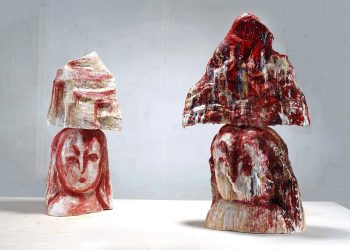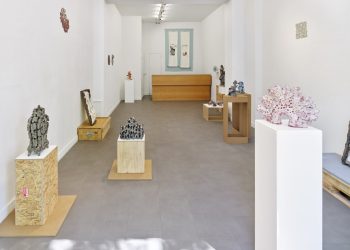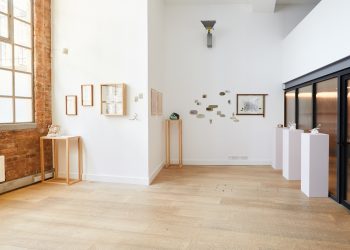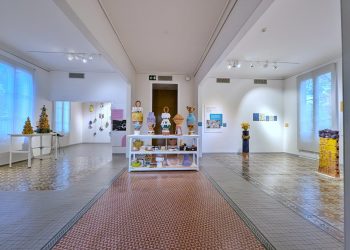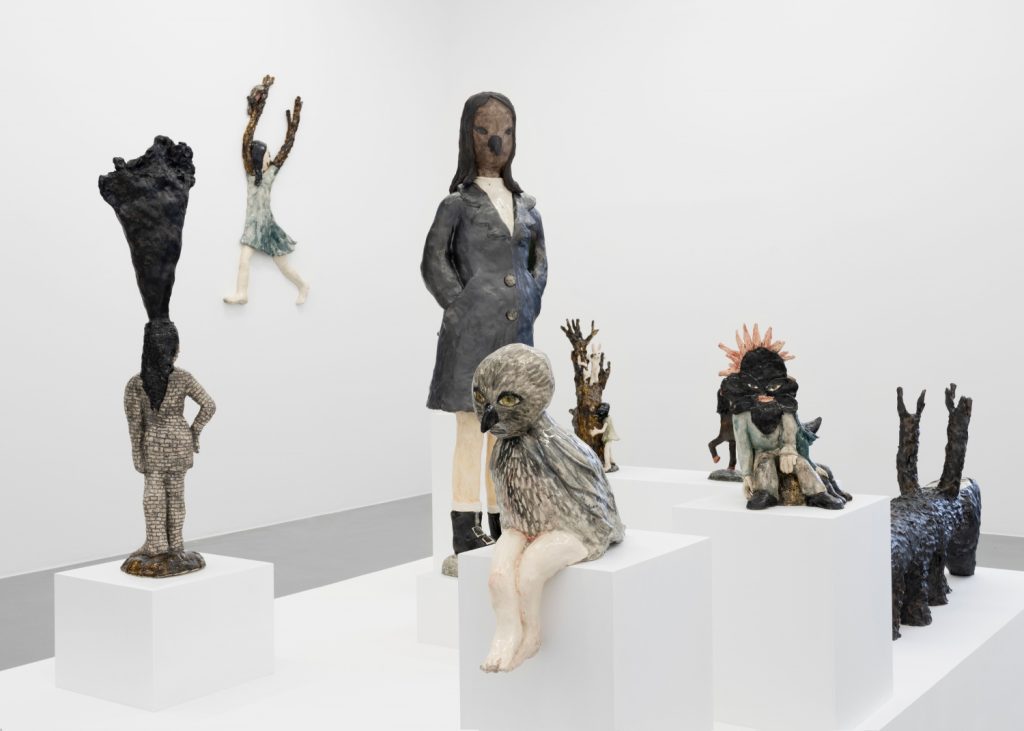
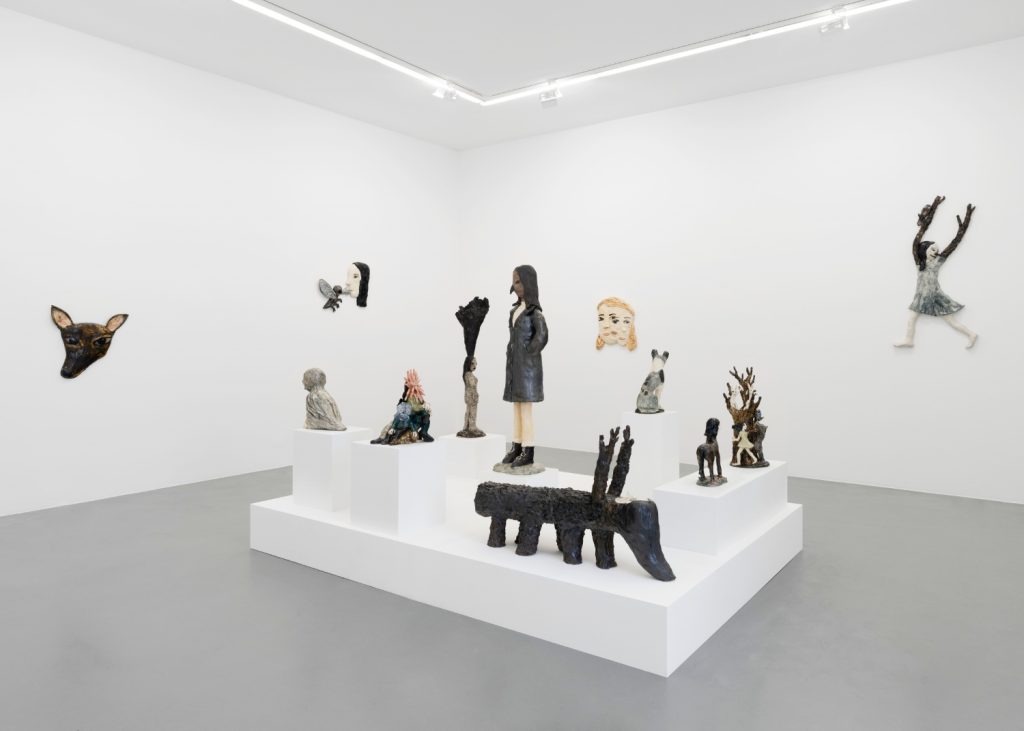
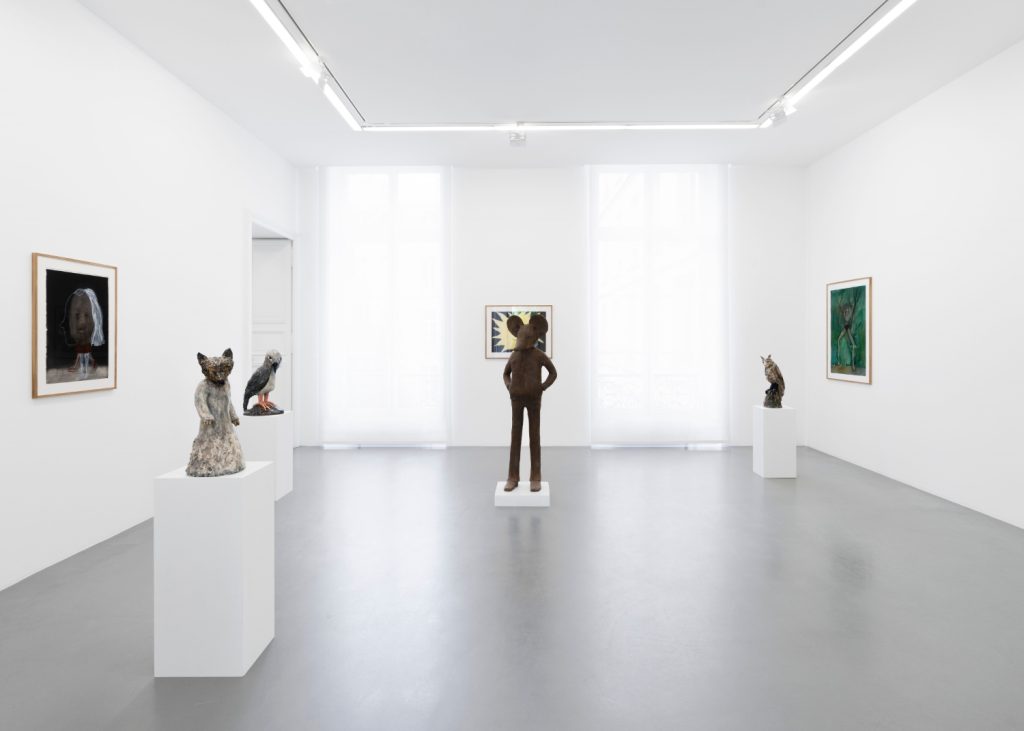
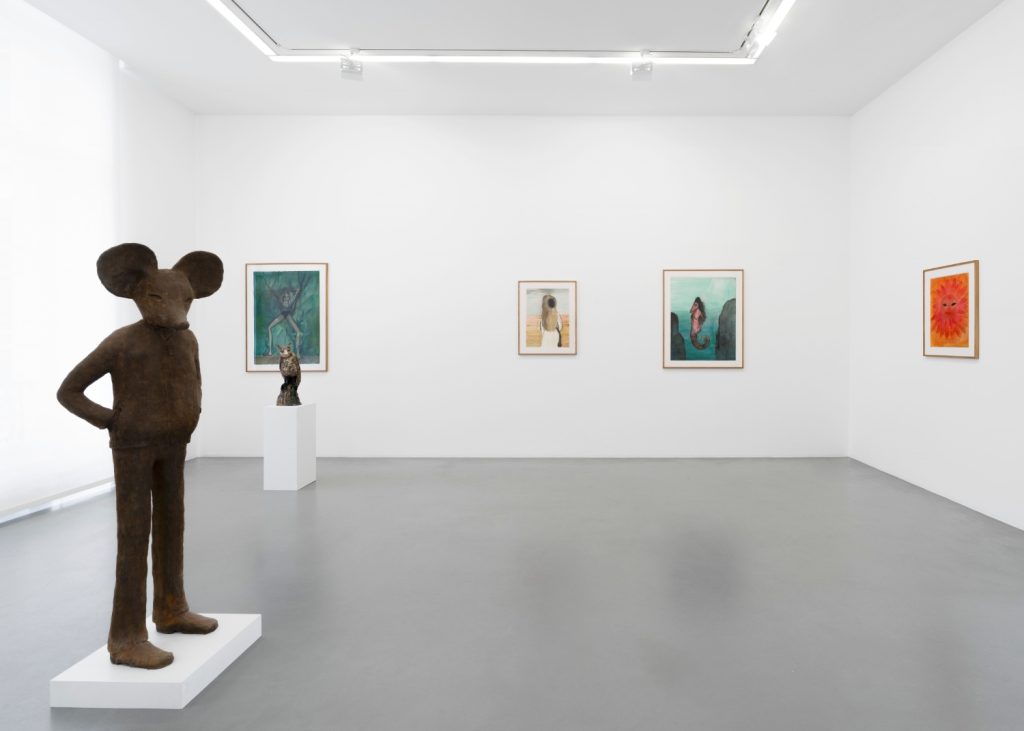
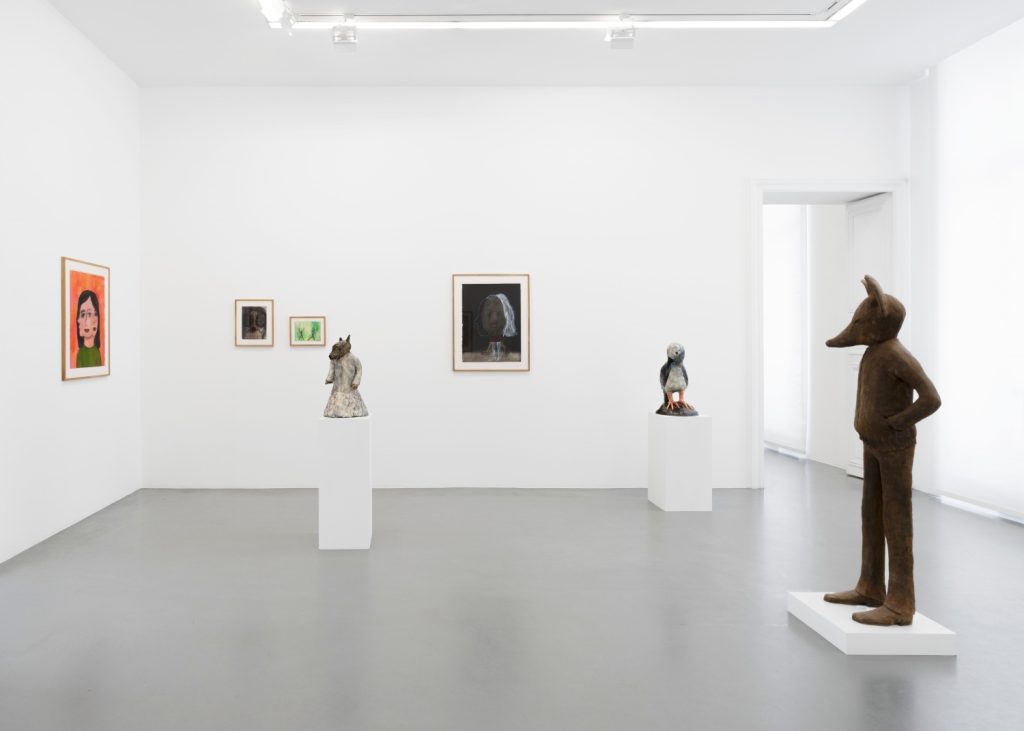
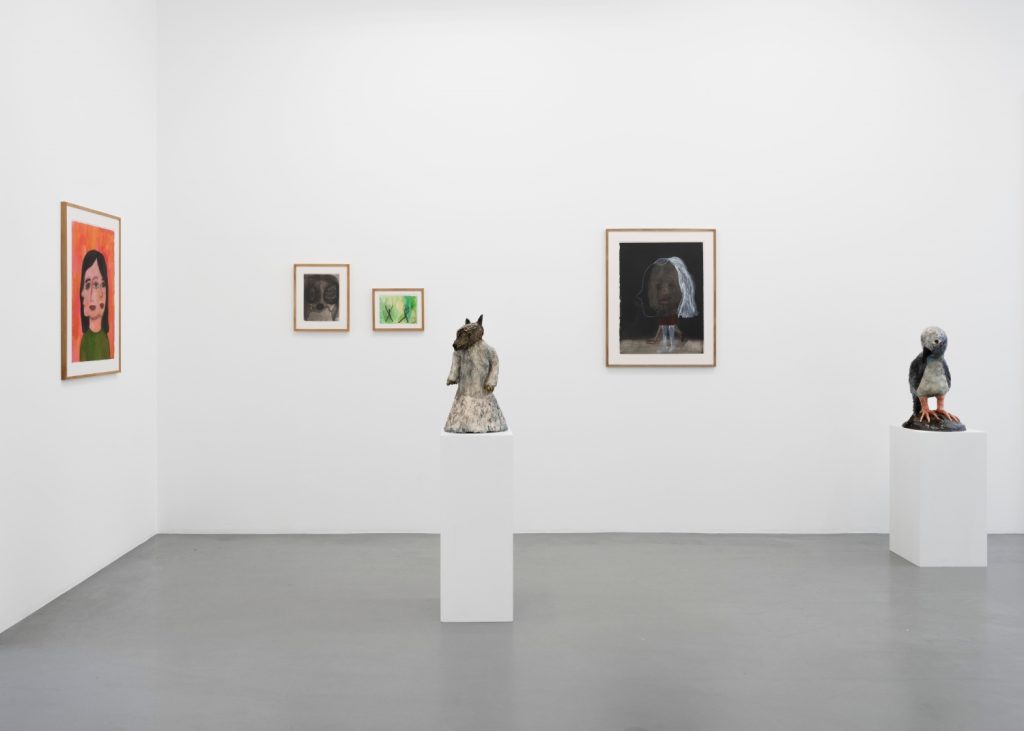
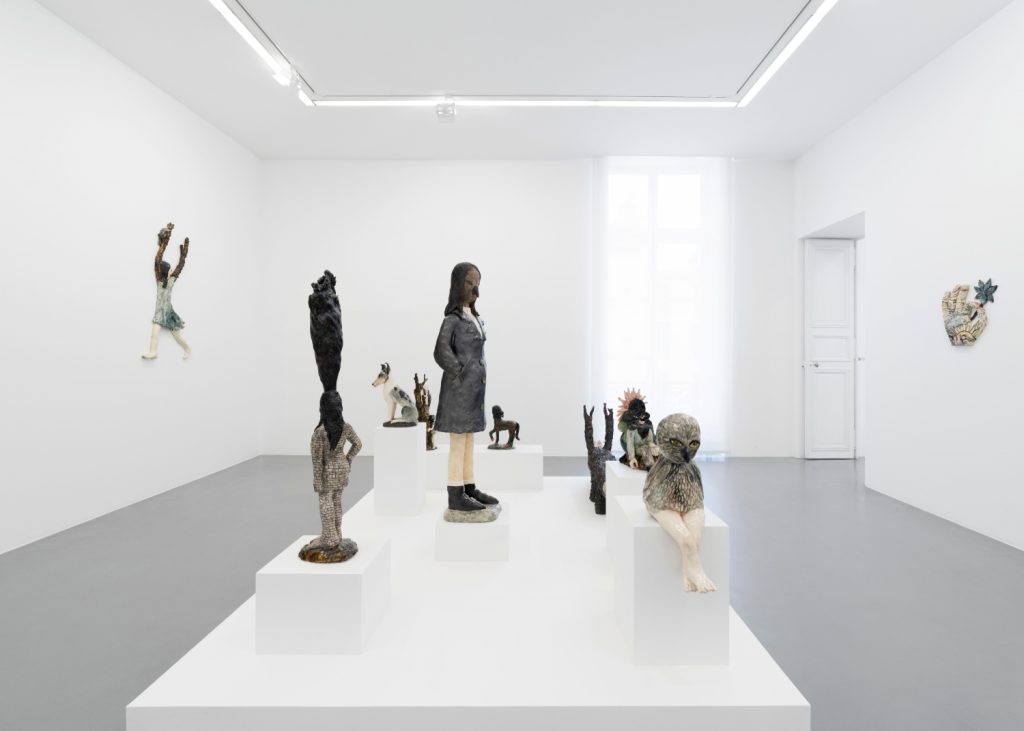
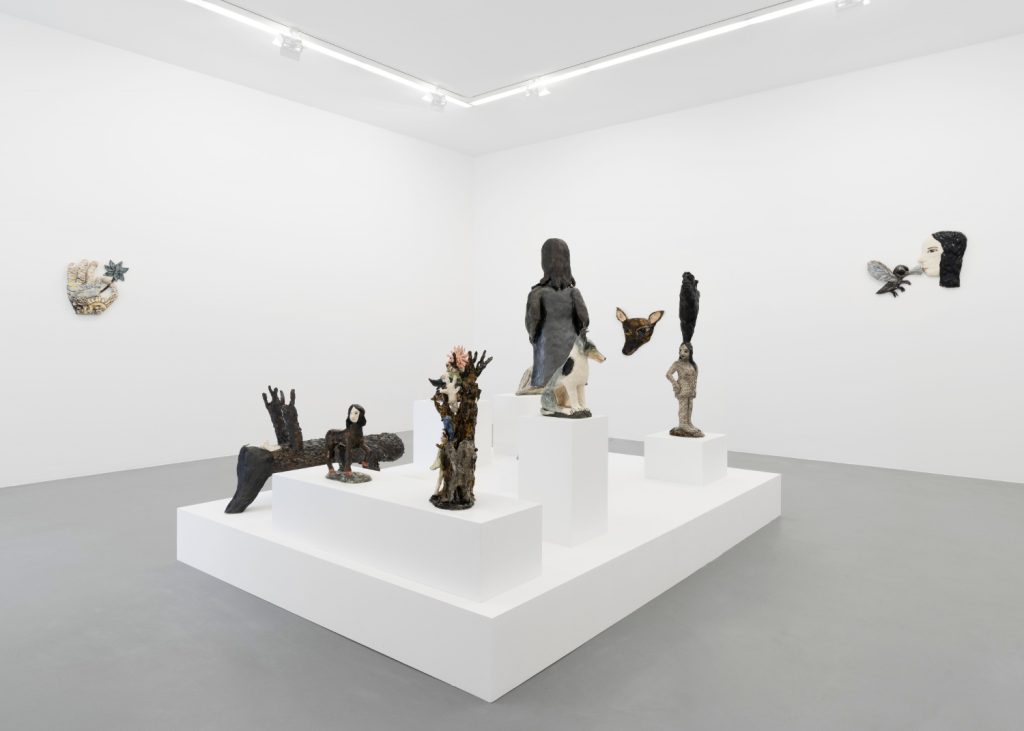
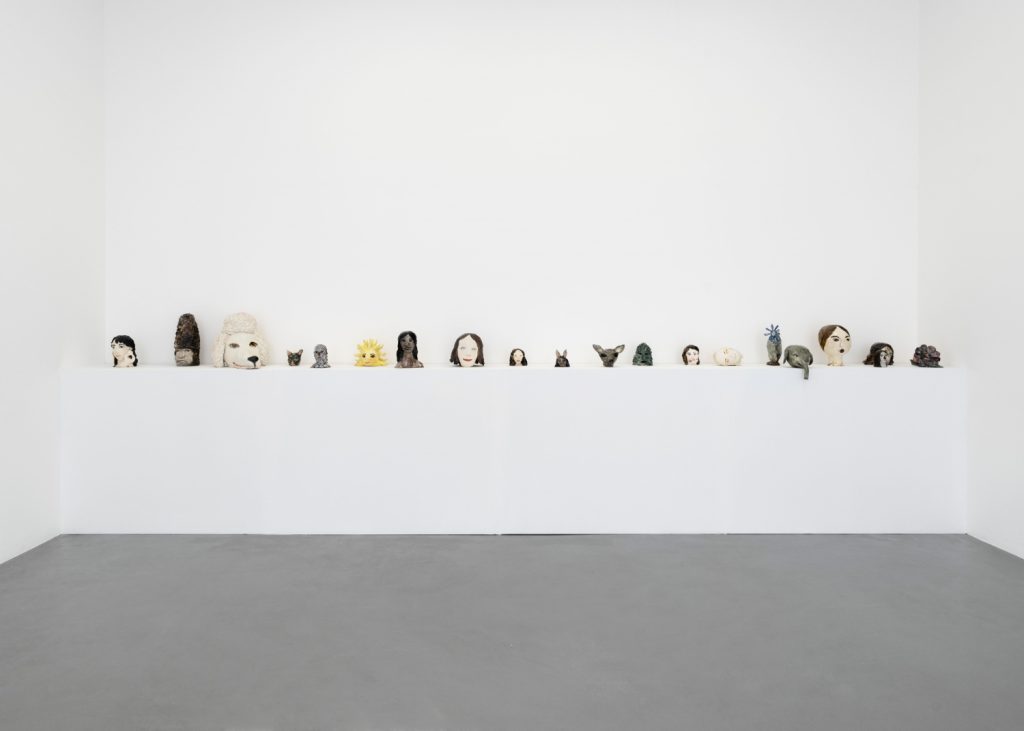
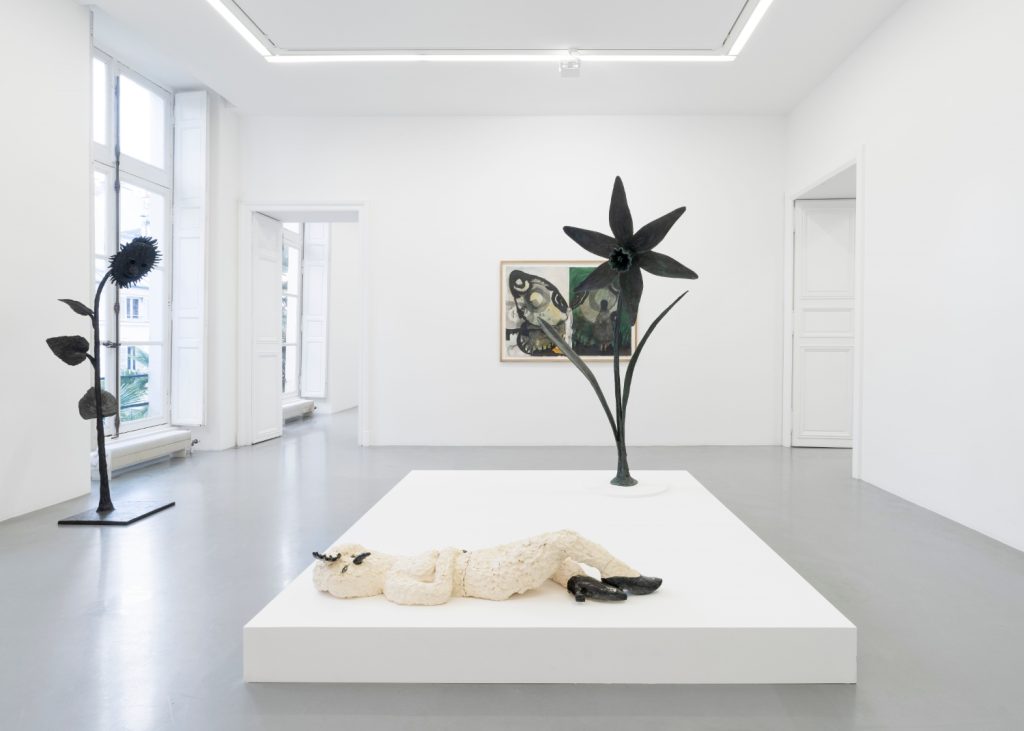
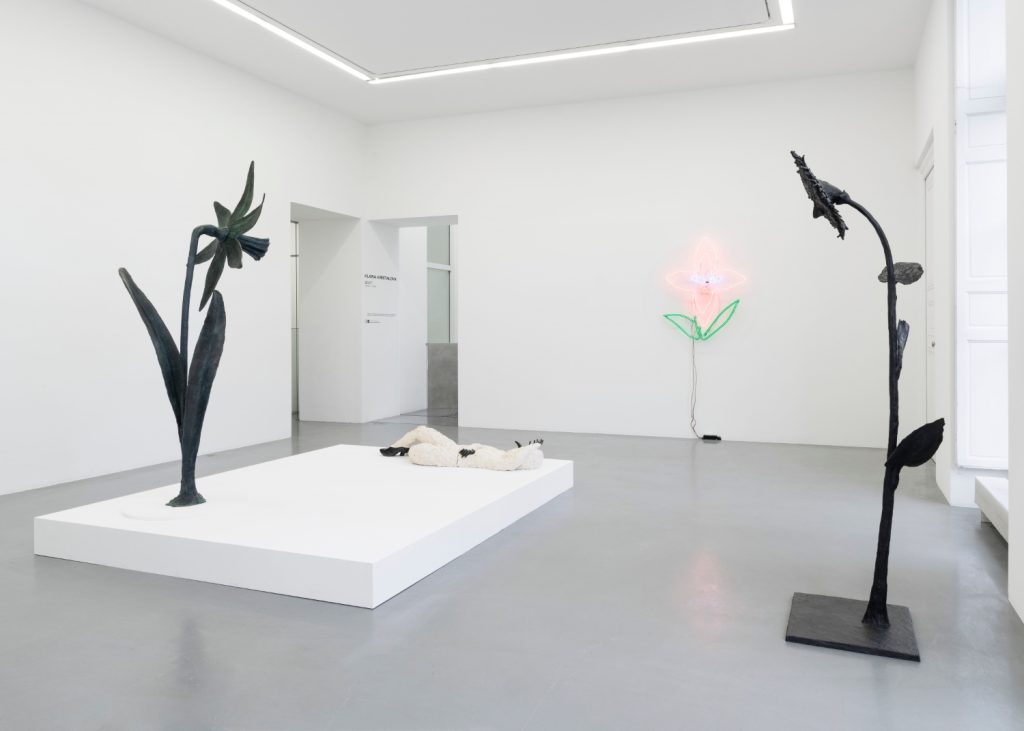
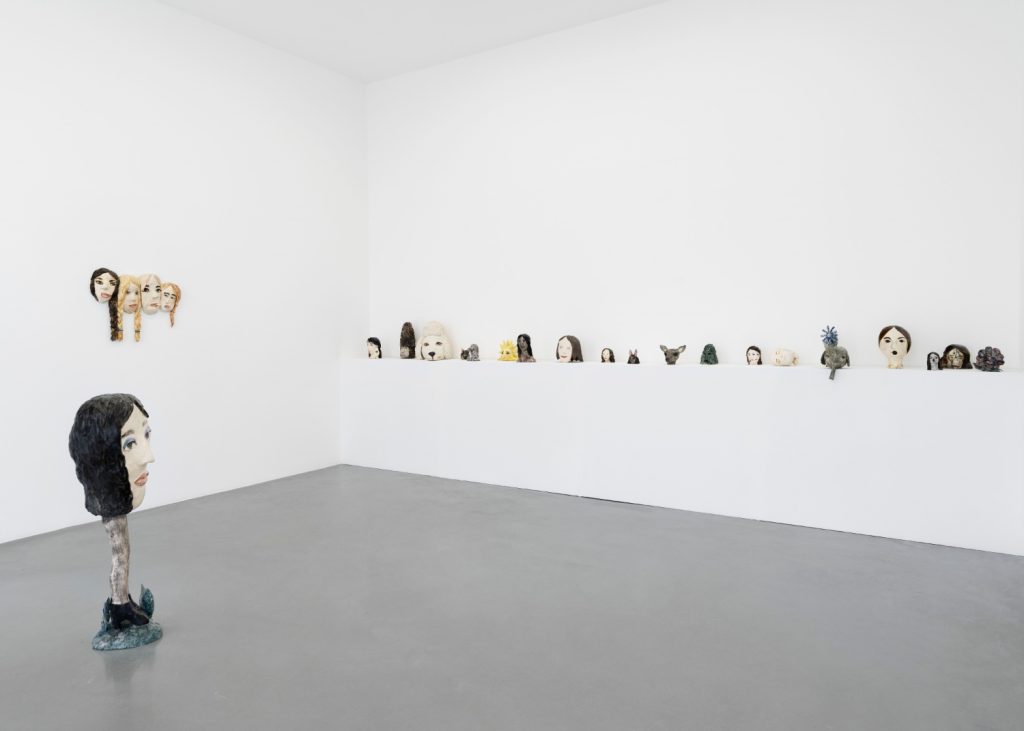
Klara Kristalova: Beast is on view at Perrotin, Paris
April 13 – June 1, 2024
Perrotin is pleased to present Beast, Klara Kristalova’s eighth solo exhibition with the gallery and her fourth at Perrotin Paris. On this occasion, the artist will showcase a new series of sculptures and works on paper in which reality blends with fiction and boundaries between nature and humanity become blurred, revealing the fragility of life and the complexity of the relationships between beings.
“I am a sculpting draughtsman and painter”: Klara Kristalova, born in 1967, doesn’t let herself be pigeonholed into categories, and even takes pleasure in defying them. Far from any conventional approach, she allows unexpectedness and singularity to emerge from the abolition of boundaries between the arts, from the exploration of undefined margins. In the mid-1990s, her artistic path took her away from pure painting and towards modelling. She approaches this discipline with a great deal of freedom and playfulness, appreciating both its shaping and its materiality.
Kristalova’s ceramics arise from successive transformations. A quick drawing is soon followed by modelling, which develops this initial intention. By kneading, she reconnects with an ancestral practice. The clay is worked directly with the fingers, creating irregularities and shifting surfaces. An initial firing precedes the moment of painting on ceramic, quick and playful… Finally comes the ultimate transformation: the final firing and its unpredictability. Kristalova’s creative process incorporates imperfection, emergence and a certain amount of chance: when the kiln is opened, she particularly likes it when the colours have dripped and blended. When they nestle in an unexpected space, blurring the contrast between the purity of the white and the intentionally cold, dark colours.
In the midst of this ceramic population, a few vigorous bronzes temper the vulnerability of the clay.
[Beast]
Beast invites us to plunge into Kristalova’s enigmatic universe. Reality blends with fiction: human or animal heads and masks rub shoulders with hybrid beings, with unusual distortions of scale. What emerges is a fantastic world where anxiety borders on humour, as with the gigantic insect in The fly’s kiss, whose flower-like proboscis delicately touches the child’s lips. An unexpected moment of tenderness is born from this supernatural kiss.
Kristalova blurs the boundaries between nature and humanity. Fascinated by the connection between humans, animals and plants, she combines them at will, like playful and disturbing exquisite corpses. Man as a natural being is omnipresent: he merges into an invasive, all encompassing nature; the plants incorporate human faces. Are Kristalova’s beings humanoid animals, or are they animalised, vegetalised humans? Probably neither: the hybrid being occupies a space between, a limbo land. Far from the classifications in which humans like to confine the world in order to control it better.
The indeterminate nature of these hybrid beings places them in a fantastical universe rooted in symbolism: in front of All my thoughts or the flower-faces, we are irresistibly reminded of Odilon Redon’s Smiling Spider. These beings become “phantasms,” in the etymological sense of apparitions. Are we in another reality or are we in the world of dreams, or even nightmares, a distant cousin of the visions of Munch or Goya? Kristalova’s creatures’ non-compliance with real beings gives them the status of “beasts.” As such, they embody an otherness, a uniqueness, a difference that raises questions: the beast externalises and transposes fears, frustrations, rage and panic into its very appearance, but also expresses a form of outlet, of freedom… A strange people not unlike Gauguin’s ceramic monsters.
[Vacillations]
Kristalova’s hybrid beings sound out the way we look at others, our society’s complex relationship with monstrosity and deviations from the norm. What room is there for difference when smooth, standardised beauty is valued above all else? The hybrid world challenges the definition of the human, and raises the question of the definition of the body, its limits and its integrity. The transformations undergone by these imaginary bodies are sometimes tinged with a muted violence. The tree branches and roots that sprout from the bodies are as much factors of power, bulwarks against human excess, as they are potential prisons: such is the case of the astonishing Log, a young girl trapped in a trunk that is reminiscent of the piece of wood cradled by the enigmatic “Log Lady” in David Lynch’s universe. When difference calls existence into question.
The eruption of plant life into the bodies of young people also reflects the mutation of adolescent bodies, bearers of a vitalistic sap. Power and fragility, playfulness and seriousness, growth and invasion are all at work in these young beings steeped in questions, contradictions and doubts. Worry mingles with insouciance, grandeur with a fragility that can be seen in the attitude of the Mouse, with his hands in his pockets. Yet adolescence is the age of all possibilities, before gender determines how an individual is viewed, before the divorce between the sexes is irrevocably consummated. There is an omnipresent nostalgia for this suspended time.
The liminality of physical appearance is also the liminality of an instant: the narrative seems interrupted, without a thread to hold on to. The viewer questions both the nature of the beings and the links between them: why does All my thoughts stand apart? Larger than life, a smiling young girl perched on never-ending stick-legs, seems to move slowly and benevolently amongst the others, like a carnival monster on stilts. A timeless moment in which social norms and conventions are turned on their head. Non-conformity, freedom, distance and entertainment are always active in Kristalova’s work: in the shade of the head-flowers, a Reclining bird lounges in high heels. In Ordinary day, rabbits taunt a disgruntled wolf from the top of a tree.
There is no Manichaeism in this suspended world of possibilities. The tipping point is never certain, even when anxiety wells up: is the humanoid Mouse just shy, encircled by the beings around him, or is he threatening them? The young mouse-man reflects the complexity at work in all of us, whether or not we are inclined towards darkness. Simultaneously vulnerable and powerful, he reflects the threat that man poses to the earth. His invocation by the artist is invested with a cathartic value, in the Aristotelian sense of the term: a purifying of the passions. The work therefore has an almost magical, prophylactic value.
Concerned about the rise of extremes and mankind’s destructive attitude, Kristalova constructs a world that reveals the fragility of life and the complexity of the relationships that are forged between beings. The viewer is invited to question his or her perception, which changes according to his or her psychology and state of mind. “My art is about language, communication,” says Kristalova. This imaginary dialogue, the keys to which are not revealed, allows each of us to project our own feelings and anxieties… A genuine relationship that engages the individual and integrates him or her into the space of the work: art as experience, to paraphrase John Dewey.
Text by Ophélie Ferlier-Bouat, director of Bourdelle museum, Paris
Contact
paris@perrotin.com
Perrotin (Paris Marais)
76 rue de Turenne
75003 Paris
France
Captions
- Views of Klara Kristalova’s exhibition ‘Beast’ at Perrotin Paris, 2024. Photo: Claire Dorn. © Klara Kristalova / ADAGP, Paris, 2024. Courtesy of the artist and Perrotin



